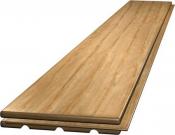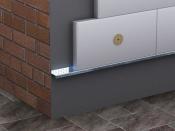Search
Login
Recommended
Sewage drainage pumps, types of pumps, expert advice on choosing a sewage drainage pump
Each owner of a suburban area, private cottage or home will not be able to argue that such luxury, in addition to pleasure and a quiet life, brings a lot of household chores. And if the breakdown of flowerbeds and gardening activities, in addition to troubles for many, can bring real pleasure, then there will not be a person who spoke positively about solving problems with sewage.
Content
- The main difference between drainage and fecal pumps. Principle of operation
- Classification of pumps No. 1. Installation and technical features
- Classification of pumps No. 2. The presence of the grinder
- Drainage and fecal pump sprut. Technical features video
The main difference between drainage and fecal pumps. Principle of operation
But developers should not be afraid of this and, as a result, abandon private territory, as the owners of peace of mind are modern technical equipment that will cope with any household task. In this case, we will talk about a drainage pump for sewage, which will cope with pumping not only liquid domestic wastewater, which is characterized by the absence of solid impurities, but also sewage, clogged with solid particles generated during the life of the owners of private estates.

The main distinguishing feature of drainage and fecal pumps from standardly designed pumps for drainage is that there is no need to pump liquid household waste contaminated with solid particles of more than 50 mm.This implies certain design features of the fecal-drainage pump, which is characterized by the absence of a strainer that prevents the ingress of solid particles directly into a functioning mechanism, while the operation of conventional drainage pumps is impossible without installing obnogo filter. Most fecal pumps operate automatically, since the maximum particle size in wastewater is limited by the diameter of the outlet through which the fecal particles are sucked.

Classification of pumps No. 1. Installation and technical features
Experts designate several specific classifications of drainage pumps for sewage, the price of which varies depending on the installation and technical features of the equipment. The first classification considered is allocated depending on the technical and operational features of fecal pumps and is represented by the following varieties:

1. Submersible drainage fecal pumps;
2. Semi-submersible drainage and fecal pumps;
3. External or so-called surface drainage and fecal equipment.
Submersible drainage fecal pump is used as a mechanism necessary for pumping water from flooded basements, as well as for the removal of storm water and the organization of watering plants. But these are all secondary functions, first of all, such equipment is designed to dispose of wastewater from sewer tanks. The design of this device involves the manufacture of a housing made of materials resistant from a chemical point of view, such as cast iron or stainless steel, which is due to functioning in a chemically aggressive environment. The installation of the device involves the installation of pumps of this type below the level of wastewater, and, consequently, at the bottom of the cesspool. The design, implying the presence of a float, determines the automated operation of the device.

Choosing equipment for a summer residence, as well as getting acquainted with the types of drainage pumps for sewage, reviews of which mainly speak about the popularity of submersible equipment, summer residents seek to give preference to this type of pumps.

The functioning of semi-submersible drainage and fecal pumps is based on the principle of incomplete immersion, according to which, when pumping wastewater, the pumping part of the equipment is immersed in the pumped substance, and the engine continues to function on the surface.

A specialized float is designed to control the correct position of the pumping equipment during operation.

It is impossible not to mention another type of fecal-drainage pumps for surface pumps for pumping wastewater.

The operation of this type of device located during the functional activity on the edge of the waste tank occurs by immersing only one hose, which is immersed in a filled cesspool. Choosing a fecal pump for a summer residence, it is possible to give preference to precisely this type of device, since its mobility and low cost allow the use of equipment in a summer residence. However, low throughput and design features limit the mass distribution of this type of device. Another significant drawback of surface pumps is the impossibility of stationary operation, since the lack of surface waterproofing leads to the inevitability of breakdown of pumping equipment in the event of precipitation. The drains remaining inside the unit will quickly freeze at low temperatures, which also contributes to equipment breakdown.


Classification of pumps No. 2. The presence of the grinder
An important role in the design of drainage and fecal sewage pumps is assigned to the grinder or knife, in accordance with the absence or presence of which another classification of pumping equipment has been developed. Also, the basis of this division is the temperature of the effluent. So, experts distinguish:
1.Drainage-fecal pump with a knife for pumping cold wastewater, the temperature of which does not exceed 40 degrees. It is one of the most common type groups of pumping equipment, as it copes with pumping wastewater contaminated with hair, paper particles and other hygiene products. Such pumps are often used in cafes, restaurants, and other catering establishments, as well as in gyms, where it is difficult to avoid foreign particles entering the sewer system. The main feature of the functioning of such pumps is the removal of wastewater and the parallel grinding of all foreign particles that may act as a damaging agent for the functional pump system.

Drainage and fecal pump sprut. Technical features
The sprut drainage and fecal pump, the operation of which you can familiarize yourself in more detail by watching the video below, is the most common option with an ideal price-quality ratio.

It is an extremely common model used in domestic conditions. The design, equipped with a float switch, allows for automated operation of the mechanism as the tank is emptied and filled. The temperature of the wastewater should not exceed 40 degrees, and the diameter of the particles subjected to grinding is 35 mm. The use of pumps of this type allows the installation of smaller sewer pipes at the outlet, without fear that they will become clogged with solid particles.
2. Drainage-fecal pump with a knife for pumping high-temperature effluents (over 90 degrees). Its design features as a whole do not differ from the features of the previous system, however, it is designed to remove hot wastewater;

3. The fecal pump without a knife (grinder) for pumping cold drains. The cheapest pump option. This equipment is designed to remove liquid from a pool bowl, as well as groundwater or water flooding basements during a flood.

4. Drainage-fecal pump without grinder, designed for pumping hot wastewater. Its design provides for the removal of liquid without solid particles, the temperature of which can exceed 90 degrees.






